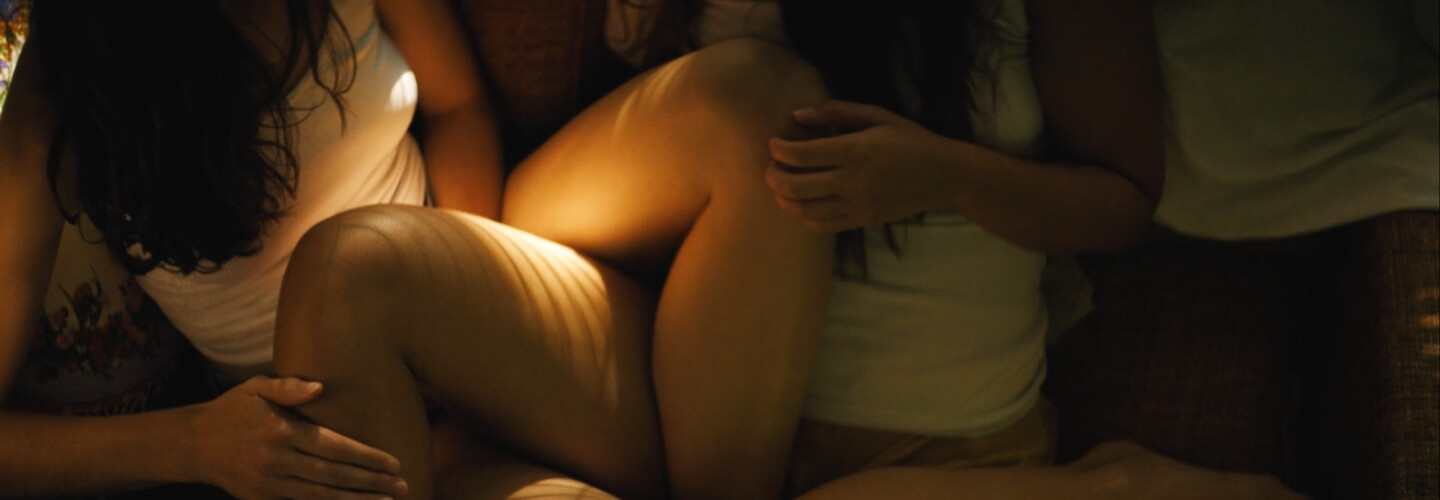
When we’re not physically present, how much of ourselves remains imbued in the spaces we inhabit day in and day out? Venturing into the untouched home of a 90 year old doctor absent for the past three years, Parker Hill’s languid experimental short Living Rooms, ponders on the youthful beauty of two girls who embody the frozen life that remains within this abandoned house. Parker shares how she brought an archaeologist’s reverence to this rumination on identity as conveyed through place and possessions.
The concept for Living Rooms all started with the house. An elderly family friend, ‘The Doctor’, moved away while he was sick, and he hasn’t been back home in over three years now. His house has remained exactly as it was the moment he walked out. It’s frozen in time that way, not just because of the seventies design, green shag carpet and all, but also because it feels like he might be back any moment.
I couldn’t believe this time capsule of a man’s life was just sitting there. The voicemail machine light still blinks, the shadows from the outside world move over the furniture. The house has a presence to it, like it’s still alive on its own. I became fascinated by this untouched space, and shot a photo series on 35mm film called The Doctor’s House: A Lifetime of Things Left Behind. Shortly after, I shot portraits of my childhood friends in the house. Seeing these young, beautiful girls against the dated interior design just clicked for me – I think it was the tension between youth on the one hand, and the traces of a lifetime left behind on the other.








The day I got the portraits developed, my DP and I decided to shoot a piece in motion picture. I wanted the film to be a moving portrait of the space, of the life that might’ve been led there, and of the girls whose life is still before them, like a big question mark. I found an old jewellery box on a vanity and used that for the score, so everything seen and heard in this film was captured and recorded in the house. At one point we used a couch pillow to lift some dust into the air, so we could get a shot of the dust motes against the light from the window. But on the whole we made it a point to not disturb anything – a lot of this piece is about paying respect to the life that was led there.
Seeing these young, beautiful girls against the dated interior design just clicked for me.
We shot the piece on an Alexa mini with these gorgeous Japanese anamorphic lenses from the 1970s. Most of the prep for the film came from my photographs. By this point, I had spent so much time in the space that I knew a lot of the shots already and I knew what time of day was best to shoot each room. So we were able to film this in less than a day, using only natural light and chasing the sun as it moved through the different rooms.

Working with the girls in the house was a very collaborative process, and we came up with a lot of their movements based on the room we were in. In some rooms like the basement, the girls were like statues inhabiting the overpacked storage wall. While other rooms felt more spacious and liberating, and the girls were free to explore. We wanted to play around with this idea that the girls’ presence was like a big secret that this house carries. Whether they’re hinting at things that happened there or what still happens.
It took me a while to structure the film in the edit. I wasn’t tied to a strict narrative, so that allowed some creative freedom, but sometimes freedom is a bad thing. I didn’t want this to be montage, I wanted to really feel the space and have the house be the forefront. What I decided to do was make a main film and then delve into a few of the rooms specifically as smaller side pieces, not reusing any footage. The four additional pieces can be found here. There was so much beautiful footage, I was overwhelmed with how to show it all. Once I decided to break it up into multiple pieces, I felt so freed up creatively. I could just make the main piece focus on a feeling, without worrying about showing every space.


